Home>Articles>How To Cook Vegetable Beef Soup In Electric Pressure Cooker
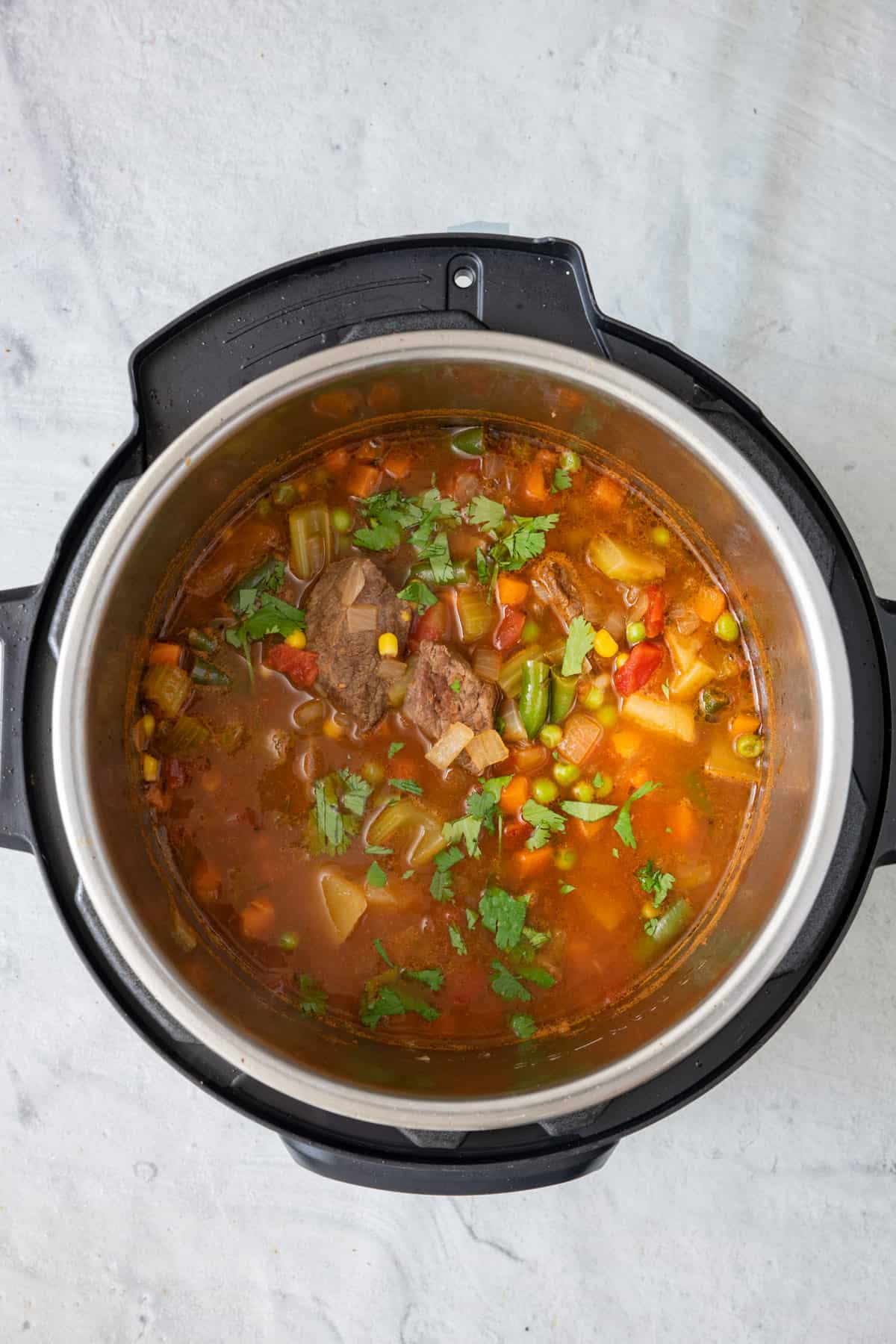

Articles
How To Cook Vegetable Beef Soup In Electric Pressure Cooker
Modified: February 29, 2024
Discover easy and delicious articles on how to cook vegetable beef soup in your electric pressure cooker. Prepare this hearty dish in no time with our helpful tips and recipes.
(Many of the links in this article redirect to a specific reviewed product. Your purchase of these products through affiliate links helps to generate commission for Storables.com, at no extra cost. Learn more)
Introduction
Vegetable beef soup is a comforting and hearty dish that is perfect for any time of the year. The combination of tender beef, fresh vegetables, and flavorful broth creates a satisfying and nutritious meal. Traditionally, this soup is simmered on the stovetop for hours to allow the flavors to meld together. However, with the advancements in kitchen appliances, you can now enjoy a delicious pot of vegetable beef soup in a fraction of the time by using an electric pressure cooker.
Electric pressure cookers have gained popularity in recent years due to their ability to cook food quickly and efficiently. They work by creating a sealed, pressurized environment that allows for faster cooking times. This not only saves time and energy but also helps to retain the nutrients and flavors of the ingredients.
In this article, we will explore the benefits of cooking vegetable beef soup in an electric pressure cooker, guide you through the process of selecting the right ingredients, provide step-by-step instructions on how to prepare and cook the soup, and offer tips on serving and storing the finished dish.
Whether you’re a busy parent trying to whip up a wholesome meal for your family or simply someone who wants a delicious and nutritious soup without spending hours in the kitchen, this article will show you how to achieve that with your electric pressure cooker.
Key Takeaways:
- Enjoy flavorful and nutritious vegetable beef soup in a fraction of the time with an electric pressure cooker, thanks to its time-saving, flavor-enhancing, and energy-efficient qualities.
- Elevate your soup game by carefully selecting high-quality ingredients, sautéing vegetables, and adding beef and seasonings, then releasing pressure and adding finishing touches for a satisfying meal.
Read more: How To Can Soup In Electric Pressure Cooker
Benefits of Cooking Vegetable Beef Soup in an Electric Pressure Cooker
Using an electric pressure cooker to prepare vegetable beef soup offers several advantages that make it a desirable cooking method for this classic dish. Here are some of the key benefits:
Time-Saving:
One of the most significant advantages of using an electric pressure cooker is its ability to cook food quickly. Compared to traditional stovetop cooking methods, an electric pressure cooker can significantly reduce the cooking time of vegetable beef soup. The high-pressure environment created inside the cooker allows for faster cooking, tenderizing the beef and vegetables in a fraction of the time. This makes it an ideal option for busy individuals or those with limited time to spend in the kitchen.
Flavor Enhancement:
The sealed environment of an electric pressure cooker helps to lock in flavors and intensify the taste of the soup. The pressurized cooking process allows the ingredients to infuse their flavors into the broth, resulting in a rich and flavorful soup. The beef becomes tender and succulent, while the vegetables retain their vibrant colors and textures. The result is a soup that is bursting with delicious flavors in every spoonful.
Nutritional Value:
When cooking vegetable beef soup in an electric pressure cooker, the shorter cooking time helps to preserve the nutrients in the ingredients. The rapid cooking process reduces the loss of heat-sensitive vitamins and minerals. As a result, the soup retains more of its nutritional value compared to traditional cooking methods that may involve longer cooking times or extended simmering. This means you can enjoy a hearty soup that not only tastes great but also provides essential nutrients.
Energy Efficiency:
Electric pressure cookers are designed to be energy-efficient. The ability to cook food quickly means the cooker uses less energy compared to conventional cooking methods that require longer cooking times and more heat. This not only helps to save on utility bills but also makes it an environmentally friendly option. So, you can enjoy your vegetable beef soup guilt-free, knowing that it is prepared efficiently and sustainably.
Versatility:
Electric pressure cookers are incredibly versatile appliances. In addition to cooking vegetable beef soup, they can be used for a wide range of recipes and cooking techniques. You can use the pressure cooker to sauté the ingredients, brown the beef, and even make other soups, stews, or one-pot meals. It can also be used as a slow cooker or to steam vegetables and rice. Investing in an electric pressure cooker means you have a multi-functional kitchen tool that can streamline your cooking process and expand your culinary possibilities.
With these benefits in mind, it’s clear why an electric pressure cooker is a valuable addition to any kitchen. Its time-saving, flavor-enhancing, and energy-efficient qualities, along with its versatility, make it an excellent choice for cooking vegetable beef soup and many other dishes.
Choosing the Right Ingredients for Vegetable Beef Soup
When it comes to vegetable beef soup, the quality and selection of ingredients play a crucial role in the overall flavor and texture of the dish. Here are some tips to help you choose the right ingredients:
Beef:
For the best results, choose a cut of beef that is suitable for slow cooking. Chuck roast, stew meat, or beef shanks are excellent choices. Look for well-marbled meat that will become tender and flavorful during the cooking process. Trim any excess fat before adding the beef to the pressure cooker.
Vegetables:
The selection of vegetables can vary depending on your personal preference. Classic options include onions, carrots, celery, peas, green beans, corn, and potatoes. You can also add other vegetables like bell peppers, zucchini, or mushrooms for added flavor and nutrients. Ensure that the vegetables are fresh and vibrant in color.
Broth:
Vegetable beef soup requires a flavorful broth to enhance the taste of the ingredients. You can use store-bought beef broth or make your own by simmering beef bones and aromatic vegetables for several hours. If using store-bought broth, opt for low-sodium or unsalted varieties to have more control over the seasoning of the soup.
Seasonings:
Seasonings are essential for adding depth of flavor to the vegetable beef soup. Common seasonings include garlic, thyme, bay leaves, paprika, Worcestershire sauce, and salt and pepper. Adjust the quantities to suit your taste preferences. Fresh herbs like parsley or thyme can also be added at the end to brighten up the flavors.
Aromatics:
Aromatics like onions and garlic are crucial for building a savory base for the soup. Sauté them in a little bit of oil or butter before adding the rest of the ingredients to enhance their flavors. The aromatics provide a foundation of flavor that will permeate the entire soup.
Optional Additions:
Consider adding additional ingredients to customize your vegetable beef soup. This could include canned diced tomatoes, tomato paste, red wine, Worcestershire sauce, or even a splash of balsamic vinegar for added complexity. Experiment with different flavors to create your own signature vegetable beef soup.
By carefully selecting high-quality beef, fresh vegetables, flavorful broth, and the right seasonings, you’ll be able to create a vegetable beef soup that is both delicious and satisfying. Take the time to choose the best ingredients available to ensure the success of your soup.
Preparing and Sautéing the Vegetables
Properly preparing and sautéing the vegetables for your vegetable beef soup is crucial for unlocking their flavors and ensuring the perfect texture. Here’s a step-by-step guide on how to do it:
1. Wash and Chop the Vegetables:
Start by washing the vegetables thoroughly to remove any dirt or debris. Peel and chop the onions, carrots, celery, and any other vegetables you plan to include in your soup. Keep the pieces relatively uniform in size so that they cook evenly.
2. Preheat the Electric Pressure Cooker:
Turn on the electric pressure cooker and select the sauté function to heat it up. Add a small amount of cooking oil or butter (about a tablespoon) to the pot, allowing it to melt or heat up.
3. Sauté the Aromatics:
Once the oil or butter is hot, add the chopped onions and sauté them for a few minutes until they become translucent and slightly caramelized. This will help develop a depth of flavor in your soup. Add minced garlic and continue sautéing for another 30 seconds until fragrant.
4. Add Other Vegetables:
Add the rest of the chopped vegetables to the pot. Stir them well, ensuring they are coated in the oil and that they cook evenly. Sauté the vegetables for about 5 minutes until they start to soften slightly. This step helps to intensify their natural flavors and enhances the overall taste of the soup.
5. Season the Vegetables:
Season the vegetables with salt, pepper, and any other desired seasonings. This will enhance their flavors and ensure that they are well-seasoned throughout the cooking process. Stir well to distribute the seasonings evenly.
6. Deglaze the Pot:
If you notice any browned bits stuck to the bottom of the pot, deglaze them by pouring a small amount of liquid (such as broth or wine) into the pot. Use a wooden spoon or spatula to scrape up the flavorful residue from the bottom. This will add depth of flavor to your soup.
Once you have completed these steps, your vegetables will be sautéed and ready to continue the cooking process with the addition of the beef and broth. Sautéing the vegetables before pressure cooking them helps to develop their flavors and creates a robust base for your vegetable beef soup.
Adding Beef and Seasonings to the Pressure Cooker
Once you have sautéed the vegetables in the electric pressure cooker, it’s time to add the beef and seasonings to enhance the flavor of your vegetable beef soup. Follow these steps to ensure a flavorful and well-seasoned soup:
1. Brown the Beef:
Before adding the beef to the pressure cooker, it’s a good idea to brown it first. This step adds depth of flavor to the meat. Heat a little bit of oil in the cooker using the sauté function. Add the beef cubes in a single layer, making sure not to overcrowd them. Brown the beef on all sides, stirring occasionally, until it’s nicely seared. This process will help to develop a rich, caramelized flavor in the meat.
2. Season the Beef:
While browning the beef, you can season it with salt, pepper, and any other desired seasonings. This will infuse the meat with flavor as it cooks. You can use a pre-made seasoning blend or create your own by combining herbs and spices such as thyme, paprika, or garlic powder. Adjust the seasonings to your taste preferences.
3. Deglaze the Pot:
If there are any browned bits stuck to the bottom of the pressure cooker from browning the beef, deglaze the pot by adding a small amount of liquid such as broth or wine. Use a wooden spoon or spatula to scrape up the flavorful residue from the bottom. This step adds additional depth of flavor to your soup.
4. Add the Seasonings:
After deglazing the pot, add the desired seasonings to the pressure cooker. Common seasonings for vegetable beef soup include garlic, thyme, bay leaves, Worcestershire sauce, and paprika. Adjust the quantities based on your personal preferences. These seasonings will contribute to the overall taste profile of your soup.
5. Pour in the Broth:
Once the seasonings are added, pour in the beef broth to cover the beef and vegetables. The amount of broth will depend on the size of your pressure cooker and the desired consistency of your soup. If you prefer a thinner soup, add more broth. Make sure not to exceed the maximum fill line of your pressure cooker.
By browning the beef and seasoning it well before pressure cooking, you’re adding layers of flavor to your vegetable beef soup. The browning process brings out the natural richness of the meat, while the seasonings infuse the soup with delicious aromas. Now that your soup is well-seasoned, it’s time to move on to the next step – cooking the vegetable beef soup in the electric pressure cooker.
Cooking Vegetable Beef Soup in the Electric Pressure Cooker
Now that you have prepared the ingredients and added the beef and seasonings to the pressure cooker, it’s time to cook the vegetable beef soup. Follow these steps to ensure a successful and flavorful cooking process:
1. Set the Pressure Cooker:
Secure the lid of the electric pressure cooker and ensure that the pressure release valve is in the sealed position. Set the pressure cooker to the “Soup” or “Meat/Stew” setting, depending on the options available on your specific model. Adjust the cooking time according to the size and type of beef you are using.
2. Start the Cooking Process:
Once you’ve set the pressure cooker, it will start to build pressure and cook the soup. The cooking time will vary depending on your specific pressure cooker model and the thickness of the beef cubes. Typically, vegetable beef soup takes around 20-30 minutes under pressure.
3. Allow for Natural Pressure Release:
Once the cooking time is complete, allow the pressure to release naturally for about 10-15 minutes. This gradual release of pressure helps to maintain the tenderness of the beef and prevents the soup from splattering when the lid is opened. Follow the manufacturer’s instructions on how to perform a natural pressure release.
4. Release the Remaining Pressure:
After the natural pressure release, you can carefully release the remaining pressure by turning the pressure release valve to the venting position. Be cautious of the hot steam and follow the manufacturer’s instructions for safely releasing the pressure. Once the pressure has been released, it’s safe to open the lid of the pressure cooker.
5. Check the Beef and Vegetables:
With the lid off, carefully check the beef and vegetables to ensure they are cooked to your desired tenderness. The beef should be fork-tender, and the vegetables should be soft but still have a slight bite. If the beef or vegetables need more cooking time, you can return the pressure cooker to the sauté function and cook them a bit longer.
6. Adjust the Seasonings:
Taste the soup and adjust the seasonings if needed. You can add more salt, pepper, or any other seasonings to suit your preference. Remember, it’s easier to add more seasoning than to remove excess, so start with a small amount and gradually add more if desired.
Now that you have completed the cooking process, your vegetable beef soup is ready to be served. But before you dig in, don’t forget to add the finishing touches to elevate the flavors and presentation of your soup.
Releasing the Pressure and Finishing Touches
After cooking the vegetable beef soup in the electric pressure cooker, it’s important to release the remaining pressure and add some finishing touches to enhance the flavor and presentation. Follow these steps to complete the process:
1. Releasing the Pressure:
Ensure that the pressure cooker has depressurized completely before opening the lid. This can be done through the natural pressure release method or by using the quick release method, depending on the recipe and your preference. If using the quick release method, carefully turn the pressure release valve to the venting position to release the steam and pressure from the cooker. Allow all pressure to release before proceeding.
2. Adjust the Consistency:
Take a look at the consistency of your vegetable beef soup. If it’s too thick, you can add more broth or water to thin it out to your desired consistency. If it’s too thin, you can simmer it on the sauté function for a few minutes to evaporate some of the excess liquid. Adjusting the consistency will ensure that your soup is just right.
3. Finishing Touches:
To elevate the flavors of your vegetable beef soup, consider adding some finishing touches. You can add a splash of Worcestershire sauce, a squeeze of lemon juice, or a drizzle of balsamic vinegar to enhance the taste. Fresh herbs like parsley or thyme can be added to brighten up the flavors. Taste the soup and adjust the seasonings accordingly.
4. Skim off Excess Fat:
If there’s any excess fat floating on the surface of the soup, you can use a ladle or spoon to skim it off. Removing the excess fat will result in a cleaner and lighter soup. It’s optional but can be done for a healthier and more visually appealing dish.
5. Let the Soup Rest:
Allow the vegetable beef soup to rest for a few minutes before serving. This will allow the flavors to meld together and the soup to cool slightly, ensuring a more enjoyable eating experience. The resting period allows the soup to reach its optimal taste and temperature.
By releasing the pressure properly and adding the finishing touches, your vegetable beef soup is now ready to be served. Ladle it into bowls, garnish it with some fresh herbs, and enjoy the delicious flavors and aromas of your homemade creation.
Serving and Storing Vegetable Beef Soup
Now that your vegetable beef soup is cooked and ready to be enjoyed, it’s time to think about the best way to serve and store it. Here are some tips to ensure a satisfying meal and proper storage:
Serving:
When serving vegetable beef soup, consider the following:
– Ladle the soup into bowls, making sure to get an equal portion of beef, vegetables, and flavorful broth in each serving.
– Garnish with fresh herbs like parsley or a sprinkle of grated Parmesan cheese to add a pop of color and additional flavor.
– Serve the soup with crusty bread, rolls, or even a side of cornbread for a complete and satisfying meal.
– Enjoy the soup while it’s still hot to fully appreciate the flavors and warmth.
Storing:
If you have leftovers or want to prepare the soup in advance, follow these guidelines for proper storage:
– Allow the soup to cool completely before storing it. Avoid putting hot soup directly into the refrigerator, as it can raise the temperature inside the fridge.
– Transfer the soup into airtight containers or resealable plastic bags. Divide it into individual portions, so you can thaw and reheat only what you need.
– Label the containers with the date to help you keep track of freshness.
– Store the soup in the refrigerator for up to 3-4 days or in the freezer for up to 3 months.
– To reheat, thaw frozen soup in the refrigerator overnight and then warm it on the stovetop or in the microwave until heated through. Stir occasionally to ensure even reheating.
Food Safety:
Always prioritize food safety when storing and reheating your vegetable beef soup:
– Avoid leaving the soup at room temperature for more than 2 hours to prevent bacterial growth. Properly store it in the refrigerator or freezer as soon as possible.
– When reheating, make sure the soup reaches a safe internal temperature of at least 165°F (74°C) to kill any potential bacteria.
– Discard any soup that has been left unrefrigerated for too long or shows signs of spoilage, such as an off smell, mold, or unusual texture.
By following these guidelines, you can serve your vegetable beef soup with confidence and know how to properly store any leftovers for future enjoyment. Whether you’re enjoying it immediately or saving it for later, your soup will continue to bring comfort and satisfaction with every bite.
Conclusion
Cooking vegetable beef soup in an electric pressure cooker offers a multitude of benefits, from saving time and energy to enhancing flavors and preserving nutrients. By carefully selecting high-quality ingredients, sautéing the vegetables, and adding the beef and seasonings, you can create a flavorful and satisfying soup that will delight your taste buds.
The electric pressure cooker streamlines the cooking process, allowing you to create a delicious pot of vegetable beef soup in just a fraction of the time it would take with traditional cooking methods. The sealed and pressurized environment helps to infuse flavors, tenderize the beef, and retain the nutritional value of the ingredients.
Remember to release the pressure properly, add finishing touches to enhance the flavors, and serve the soup while it’s hot. And if you have leftovers, follow proper storage guidelines to ensure their freshness and safety. Whether you’re serving the soup to your family or having a cozy meal by yourself, vegetable beef soup prepared in an electric pressure cooker will warm your heart and fill your belly.
So, don’t hesitate to bring out your electric pressure cooker, gather your ingredients, and embark on a flavorful journey of creating homemade vegetable beef soup. Enjoy the convenience, depth of flavor, and satisfaction that this delightful dish brings, all thanks to the wonders of modern kitchen technology!
Frequently Asked Questions about How To Cook Vegetable Beef Soup In Electric Pressure Cooker
Was this page helpful?
At Storables.com, we guarantee accurate and reliable information. Our content, validated by Expert Board Contributors, is crafted following stringent Editorial Policies. We're committed to providing you with well-researched, expert-backed insights for all your informational needs.
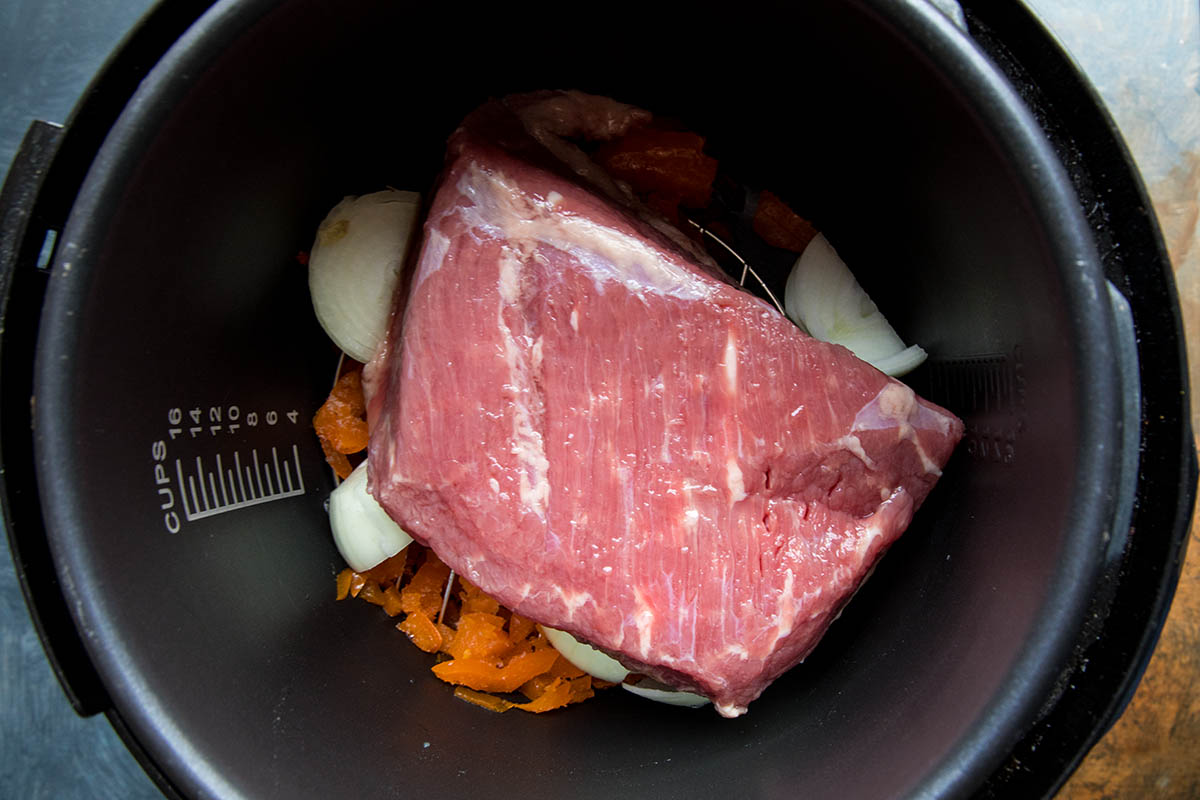
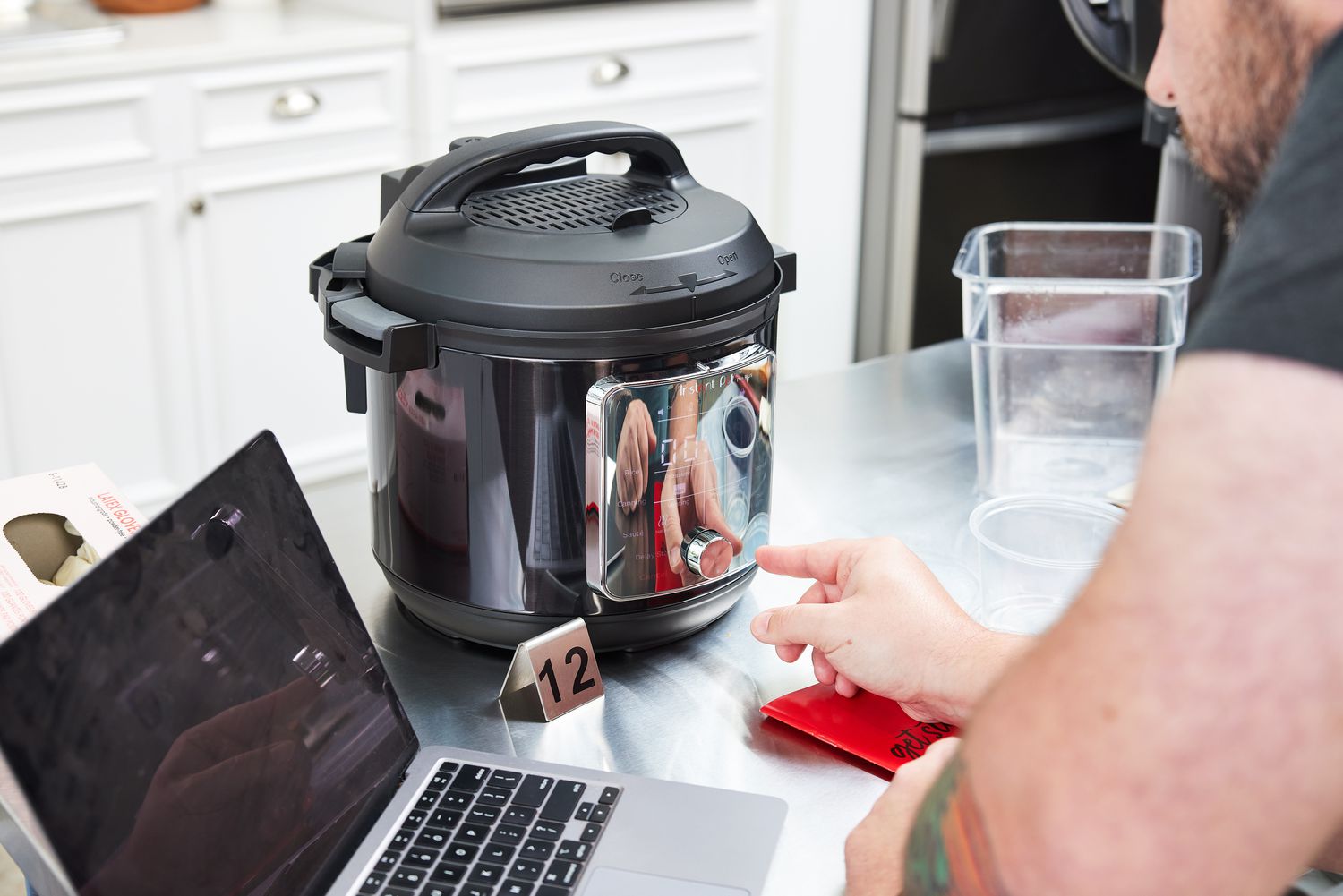
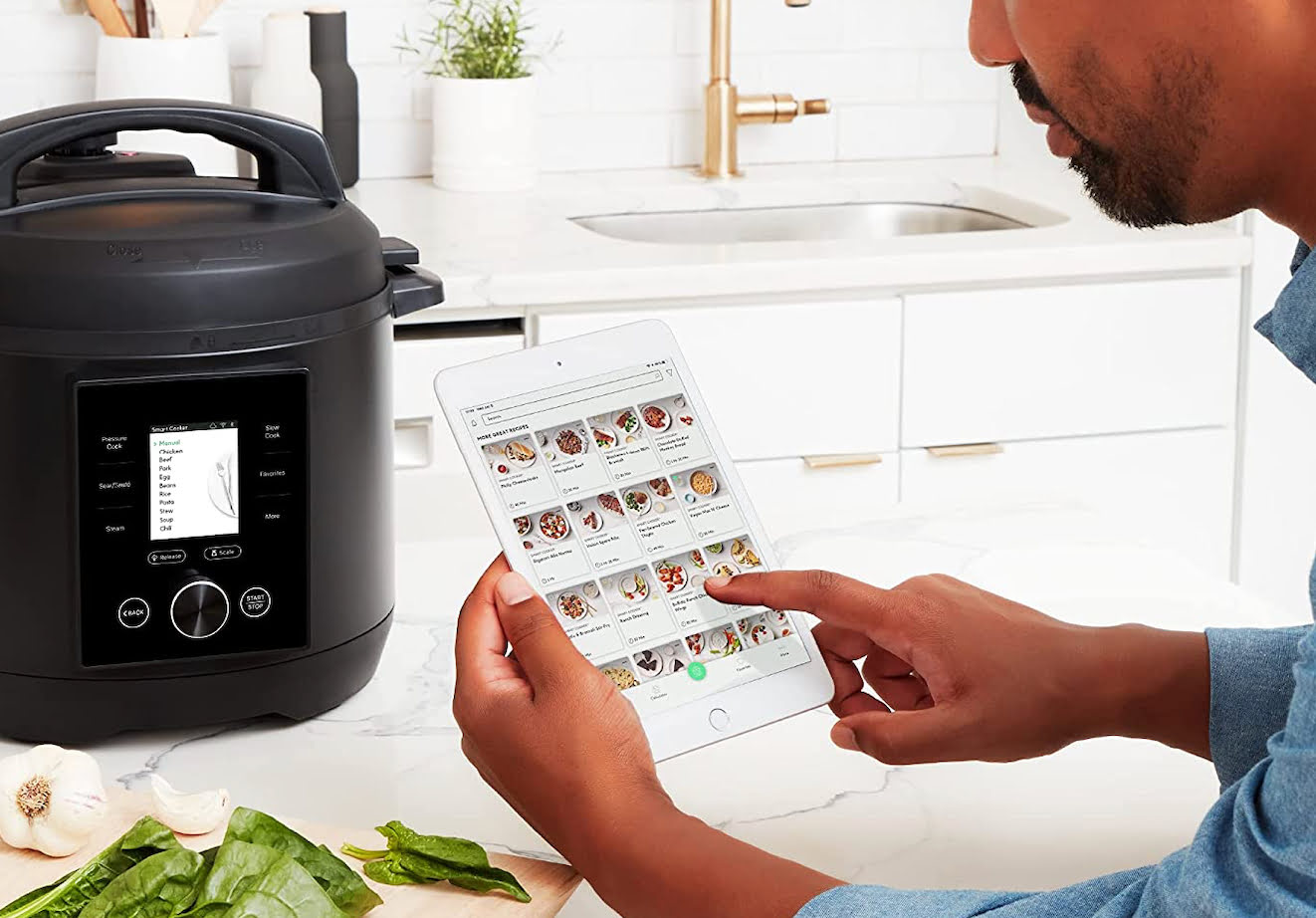
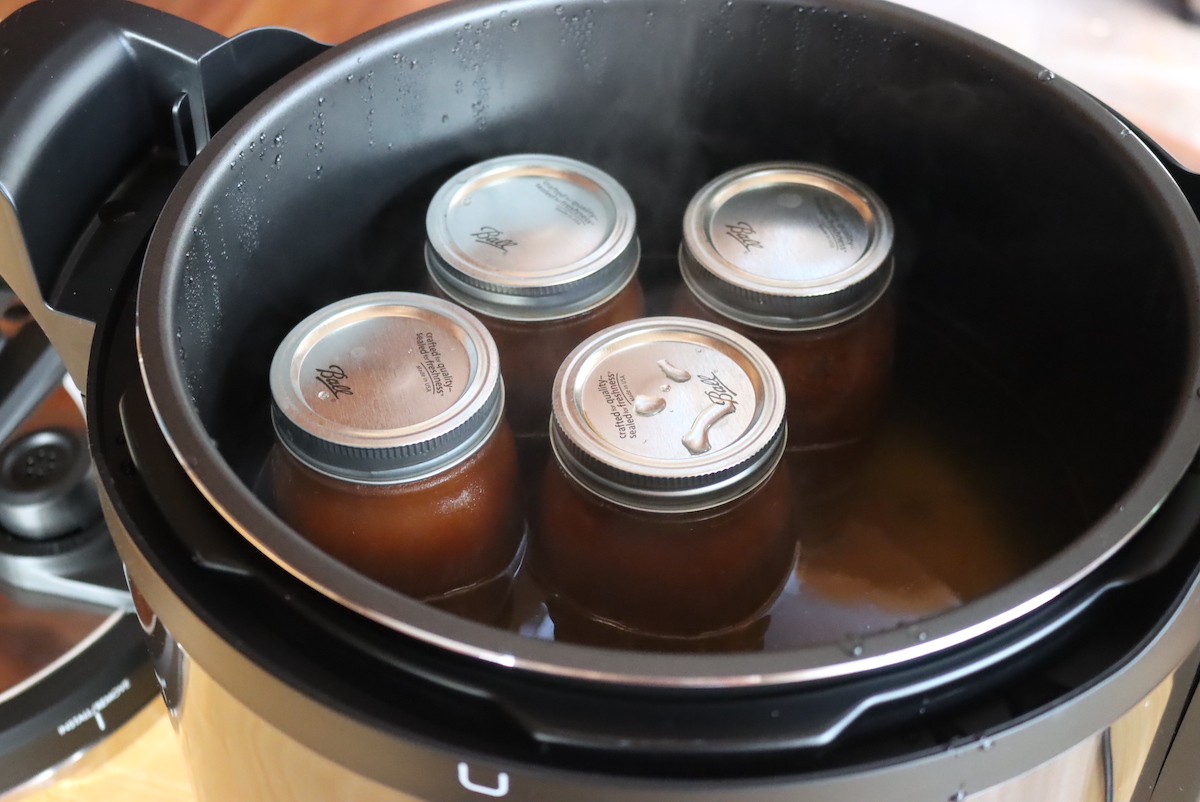
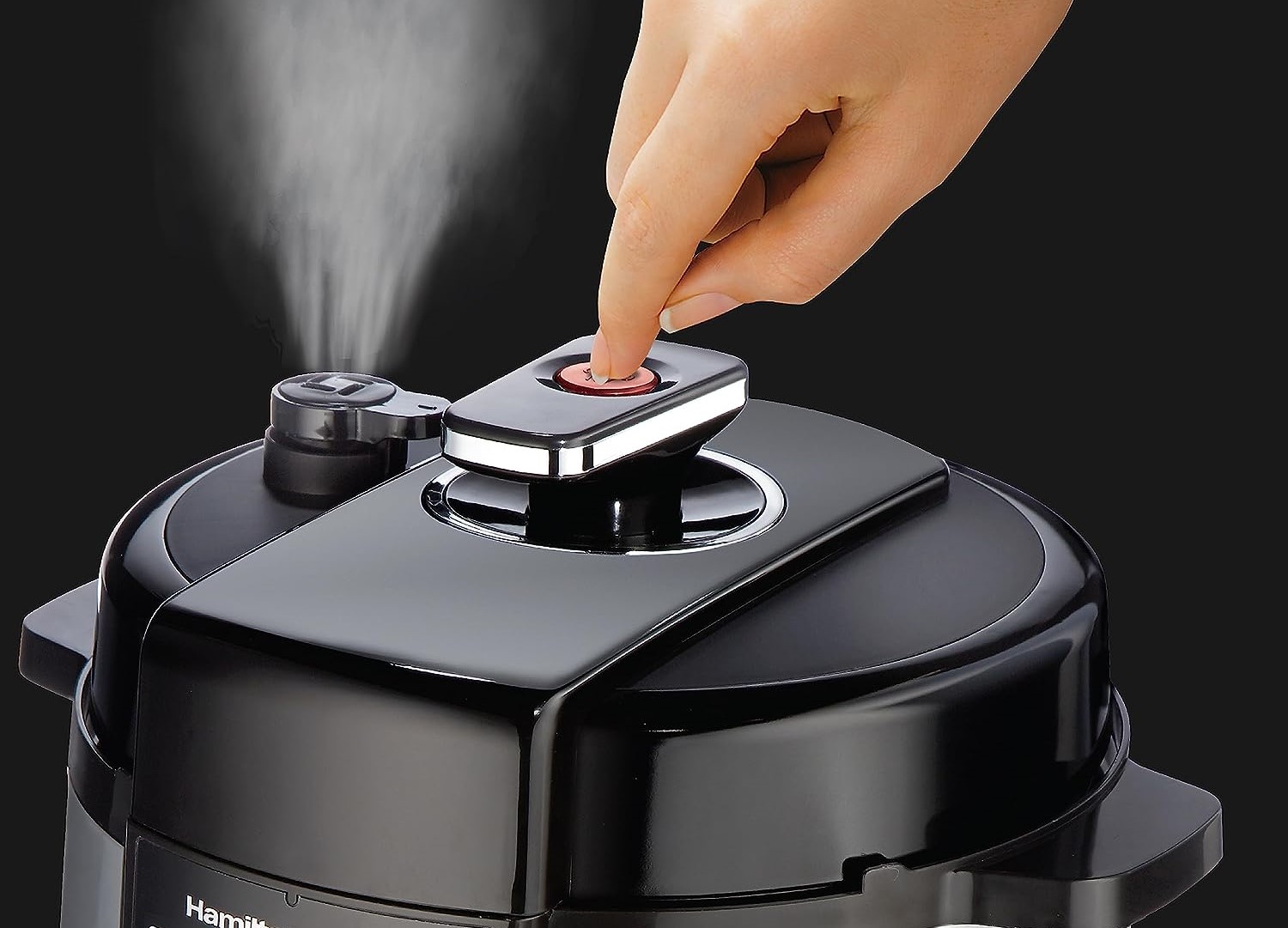

0 thoughts on “How To Cook Vegetable Beef Soup In Electric Pressure Cooker”